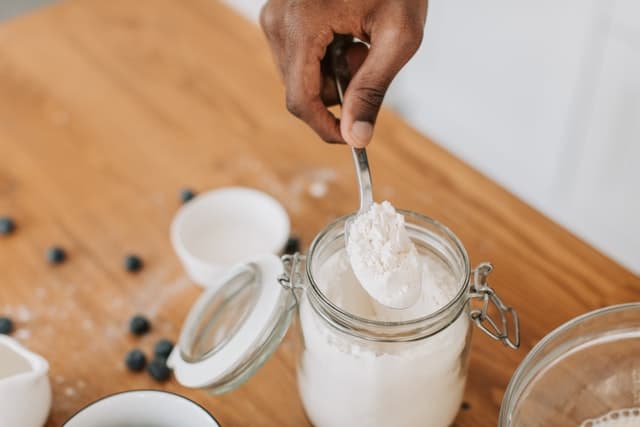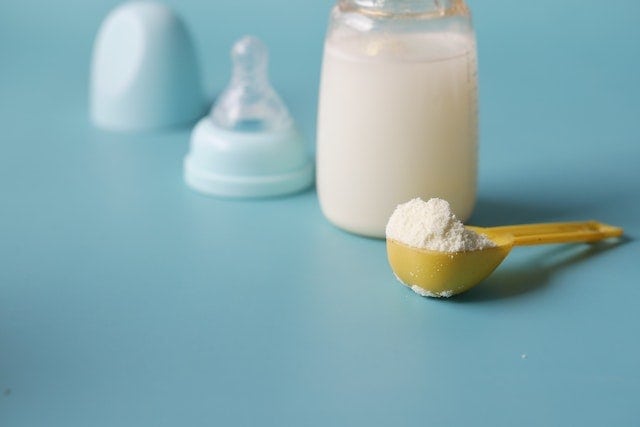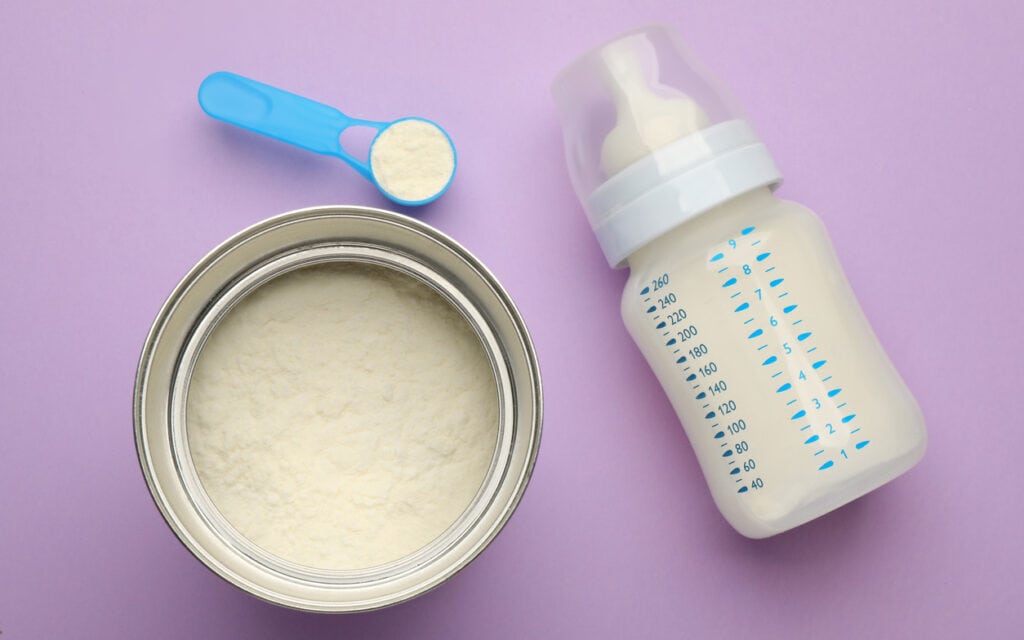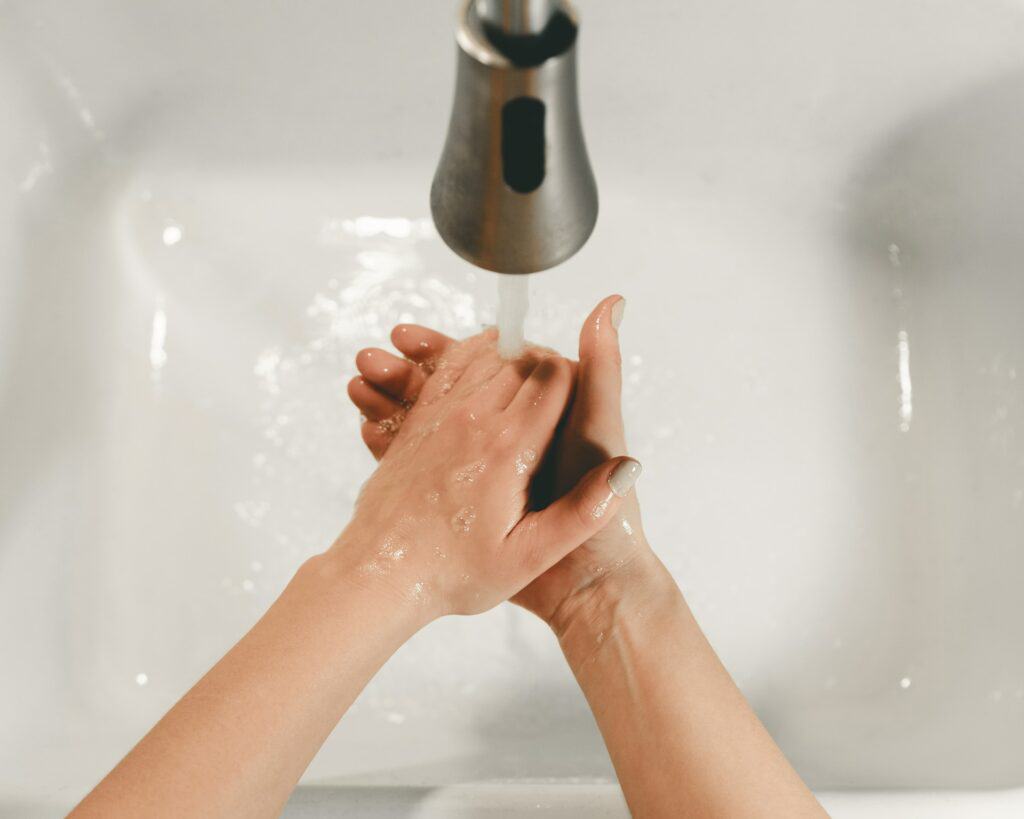When it comes to feeding a baby, many parents choose to use formula as an alternative to breast milk. However, measuring and preparing the correct amount of formula can be confusing, especially for new parents. One common question that arises is how many scoops of formula are needed for one ounce of water.
Understanding the proper way to measure and prepare baby formula is crucial for the health and well-being of the baby. Different types of formula may require different amounts of water and powder, and measuring incorrectly can lead to over or underfeeding. It’s important to carefully read the instructions on the formula container and follow them precisely.
Key Takeaways
- Understanding the correct amount of formula to use is important for a baby’s health.
- Different types of formula may require different amounts of water and powder.
- Always follow the instructions on the formula container carefully.
Understanding Baby Formula
When it comes to feeding a baby, there are several options available, and one of them is baby formula. Baby formula is a manufactured food that is designed to provide the necessary nutrients for a baby’s growth and development. It is available in different brands, types, and forms, and each one has its own unique features and benefits.
Most baby formulas are made from cow’s milk, but some are made from soy, goat’s milk, or other sources. They are usually fortified with vitamins, minerals, and other nutrients that are essential for a baby’s health. The amount of nutrients in a formula can vary depending on the brand and type, so it is important to read the label carefully.
One of the most important things to consider when choosing a baby formula is the baby’s nutritional needs. Babies require a specific balance of nutrients, including protein, carbohydrates, fats, vitamins, and minerals. Some formulas are designed to meet the needs of babies with specific health conditions, such as lactose intolerance or allergies.
Another important factor to consider is the calorie content of the formula. The number of calories in a formula can vary depending on the brand and type, and it is important to choose a formula that provides the appropriate amount of calories for the baby’s age and weight.
Some popular baby formula brands include Similac, Enfamil, Earth’s Best, Happy Baby Organics, Parent’s Choice, and Kirkland Signature. Each brand offers a variety of formulas that are designed to meet the nutritional needs of babies at different stages of development.
In conclusion, understanding baby formula is essential for parents who are looking to provide their babies with the best possible nutrition. By considering factors such as the baby’s nutritional needs, calorie content, and brand, parents can choose a formula that is best suited for their baby’s growth and development.
Formula Types
When it comes to feeding infants, parents have a variety of formula types to choose from. The most common types are powdered formula, liquid concentrate, and ready-to-feed formula.

Powdered Formula
Powdered formula is the most commonly used type of formula. It is made by mixing the powder with water and usually comes in a can or a tub. Powdered formula is the most affordable type of formula and is easy to store and transport. However, it does require a little more preparation time than other types of formula.
Liquid Concentrate
Liquid concentrate formula is a concentrated liquid that needs to be mixed with water before feeding. It comes in a can or a bottle and is more expensive than powdered formula. However, it is easier to prepare than powdered formula and is less likely to cause clumps or lumps.
Ready-to-Feed Formula
Ready-to-feed formula is the most convenient type of formula. It comes in a pre-mixed liquid form and does not require any preparation. Ready-to-feed formula is the most expensive type of formula and is not as widely available as powdered or liquid concentrate formula.
Concentrated Formula
Concentrated formula is a type of formula that needs to be mixed with water before feeding. It is more concentrated than liquid concentrate formula, which means it requires less storage space. Concentrated formula is more expensive than powdered formula but less expensive than ready-to-feed formula.
Conclusion
When choosing a formula type, parents should consider their budget, convenience, and their baby’s needs. Each type of formula has its own advantages and disadvantages, and parents should choose the type that best suits their lifestyle and their baby’s needs.
Measuring Formula
Measuring formula accurately is essential to ensure that babies receive the correct amount of nutrition. Typically, 1 oz of water requires one scoop of formula powder. However, it is important to note that different brands of formula may have different scoop sizes. Therefore, it is crucial to follow the instructions provided by the manufacturer.
Using a kitchen scale to weigh the formula powder is the most accurate way to measure the correct amount. One scoop of formula powder is usually around 8.7 grams, but this may vary depending on the brand. If using a measuring spoon, it is important to level off the scoop to ensure the correct measurement.
When measuring formula, it is important to use clean and dry equipment to avoid contamination. It is also important to measure the water first and then add the formula powder to avoid any errors in measurement.
In summary, measuring formula accurately requires careful attention to detail. Using a kitchen scale or a measuring spoon can help ensure the correct amount of formula powder is used. Always follow the manufacturer’s instructions and remember to keep equipment clean and dry to avoid contamination.
Preparation of Formula
When preparing formula, it is important to follow the recipe and preparation instructions carefully. The amount of formula needed for one ounce depends on the dilution ratio, which is typically 1 scoop of formula for every 2 fluid ounces of water.

To prepare 1 ounce of formula, start by measuring out 2 fluid ounces of water. Then, add 1 scoop of formula to the water. Mix the formula and water together thoroughly until the powder is fully dissolved.
For larger quantities, the ratio remains the same. For example, to prepare 2 ounces of formula, use 4 fluid ounces of water and 2 scoops of formula. For 3 ounces of formula, use 6 fluid ounces of water and 3 scoops of formula, and so on.
It is important to note that the amount of formula needed may vary depending on the specific brand and type of formula being used. Always refer to the package instructions for the correct ratio and preparation instructions.
In summary, preparing formula involves mixing the correct amount of formula with water according to the dilution ratio provided on the package. By following the instructions carefully, parents can ensure that their baby is receiving the proper nutrition and hydration.
Feeding Amounts and Schedules
Determining the right amount of formula to feed a baby is important to ensure proper growth and development. The amount of formula a baby needs can vary based on their age, weight, and individual needs.
For newborns, it is recommended to feed them on demand, which means feeding them whenever they show signs of hunger. A newborn typically needs about 1 to 3 ounces of formula per feeding, with a frequency of 8 to 12 feedings per day.
As a baby grows, their feeding schedule and portion size will change. Infants typically consume 2 to 4 ounces of formula per feeding, with a frequency of 6 to 8 feedings per day. By the time a baby reaches 6 months old, they may consume 6 to 8 ounces of formula per feeding, with a frequency of 4 to 6 feedings per day.
When it comes to premature babies, they may require smaller and more frequent feedings to ensure proper growth and development. A premature baby may need to consume 1 to 2 ounces of formula per feeding, with a frequency of 10 to 12 feedings per day.
For toddlers and older children, the amount of formula they need will depend on their individual needs and dietary requirements. It is important to consult with a healthcare professional to determine the appropriate amount of formula for a child.
In summary, the amount of formula a baby needs per feeding and the frequency of feedings will vary based on their age, weight, and individual needs. It is important to consult with a healthcare professional to determine the appropriate feeding schedule and portion size for a baby.
Storing Formula
When it comes to storing formula, it is important to keep in mind the safety and freshness of the product. Proper storage can help prevent contamination and ensure that the formula is still safe for consumption.
Formula should be stored in a cool, dry place, away from direct sunlight and heat sources. It is recommended to store formula in its original container, as it is specifically designed to keep the formula fresh and safe for consumption.

If the formula has been mixed, it should be stored in the refrigerator and used within 24 hours. Any leftover formula should be discarded after this time frame to avoid the risk of bacterial growth.
It is important to note that formula should not be frozen. Freezing can cause the formula to separate and change in texture, which can affect the quality of the product.
When storing formula, it is also important to pay attention to expiration dates. Expired formula should never be used, as it can pose a risk to the health of the baby.
In summary, formula should be stored in a cool, dry place, away from direct sunlight and heat sources. Mixed formula should be stored in the refrigerator and used within 24 hours. Formula should not be frozen, and expired formula should never be used.
Potential Health Concerns
When it comes to feeding infants, it is important to consider potential health concerns that may arise from using formula. Here are some of the most common concerns:
Lead
Lead is a toxic metal that can be found in some water sources and in certain types of formula. While lead levels in formula are generally low, it is important to be aware of the potential risks. Exposure to high levels of lead can cause developmental delays, learning difficulties, and other health problems.
Bacteria
Formula that is not prepared or stored properly can become contaminated with harmful bacteria. This can lead to serious health problems, especially in infants with weakened immune systems. It is important to follow all instructions on the formula packaging carefully and to use sterile equipment when preparing and storing formula.
Dehydration
Infants who are fed formula may be at risk for dehydration if they do not receive enough fluids. It is important to monitor an infant’s fluid intake and to ensure that they are receiving enough fluids throughout the day. Signs of dehydration include dry mouth, sunken eyes, and decreased urine output.
Constipation
Some infants may experience constipation when fed formula. This can be caused by a number of factors, including the type of formula used, the amount of formula consumed, and the infant’s individual digestive system. It is important to monitor an infant’s bowel movements and to speak with a healthcare provider if constipation persists.
Medical Needs
Infants with certain medical conditions may require specialized formula to meet their nutritional needs. It is important to work closely with a healthcare provider to determine the appropriate formula and feeding schedule for infants with medical needs.
Overall, it is important to be aware of potential health concerns when feeding infants formula. By following all instructions carefully and monitoring an infant’s health closely, parents and caregivers can help ensure that infants receive the nutrition they need to thrive.
Hygiene and Sterilization
Maintaining proper hygiene and sterilization when preparing formula for your baby is crucial to ensure their health and safety. Here are some tips to keep in mind:

- Always wash your hands thoroughly with soap and water before handling any baby equipment or formula.
- Clean all equipment, including bottles, nipples, and formula scoops, with hot soapy water and rinse well before sterilizing.
- Sterilize all equipment before using it for the first time and after each use. There are several methods for sterilizing, including boiling, using a sterilizer machine, or using chemical sterilizing tablets or solutions. Follow the manufacturer’s instructions for the method you choose.
- Be sure to sterilize any equipment that comes into contact with the formula, including the container that holds the formula powder.
- Use only clean, sterilized equipment to prepare and store the formula.
- If using a dishwasher to clean equipment, make sure it has a sterilizing cycle or use a separate sterilizing machine.
- Replace nipples and bottles every few months or at the first sign of wear or damage.
By following these guidelines, parents can ensure that their baby’s formula is prepared in a safe and hygienic manner, reducing the risk of illness or infection.
Important Considerations
When preparing formula for a baby, there are several important factors to consider to ensure that the baby receives the proper nutrition. Here are some key considerations:

Directions and Chart
Parents should always follow the directions on the formula container and use the chart provided to determine the correct amount of formula to mix with water. The chart typically indicates the number of scoops of formula to use for each ounce of water, based on the baby’s age and weight.
Light and Temperature
Formula should be prepared in a clean, well-lit area at room temperature. Direct sunlight should be avoided, as it can break down the nutrients in the formula. Additionally, formula should not be heated in a microwave, as it can create hot spots and cause burns.
Expiration Date
Parents should always check the expiration date on the formula container before preparing it. Expired formula should never be used, as it may not provide the proper nutrition and can cause illness.
Breast Milk
If a baby is being fed both breast milk and formula, it is important to follow the recommended guidelines for both. Breast milk should always be the primary source of nutrition, and formula should only be used as a supplement if necessary.
How Many Scoops of Formula per oz.
The number of scoops of formula per ounce of water will depend on the specific brand and type of formula being used, as well as the baby’s age and weight. It is important to carefully measure the formula and water to ensure that the correct ratio is used.
Overall, by following the directions on the formula container and considering the important factors outlined above, parents can ensure that their baby receives the proper nutrition from formula.
Consulting with a Pediatrician
When it comes to feeding infants, it’s important to consult with a pediatrician for guidance on the appropriate amount of formula to give. Every baby is different and their nutritional needs may vary. A pediatrician can provide tailored advice based on the baby’s age, weight, and overall health.

During a visit with a pediatrician, they may discuss the following factors related to feeding an infant:
- Age: The amount of formula a baby needs will vary based on their age. For example, a newborn may need less formula per feeding than a 3-month-old.
- Weight: A baby’s weight can also impact the amount of formula they need. A larger baby may require more formula than a smaller baby.
- Health: If a baby has any health concerns or medical conditions, a pediatrician may recommend a specific amount of formula to meet their nutritional needs.
Pediatricians may also provide guidance on how to properly prepare and store formula to ensure it is safe for the baby to consume. They may recommend using a specific type of formula or suggest alternatives if the baby has any dietary restrictions.
Overall, consulting with a pediatrician can provide parents with peace of mind and ensure their baby is receiving the appropriate amount of formula to support their growth and development.
Related: Newborn Sticking Tongue Out After Feeding
Frequently Asked Questions
How much formula do you put in 1 ounce?
The amount of formula to put in 1 ounce depends on the specific formula brand and type. Generally, one scoop of formula powder is mixed with 2 fluid ounces of water. So, for 1 ounce of formula, half a scoop of powder should be mixed with 1 fluid ounce of water.
How many scoops of formula per ounce for a baby?
For most infant formula brands, half a scoop of powder is mixed with 1 fluid ounce of water to make 1 ounce of formula. Therefore, the number of scoops of formula per ounce for a baby is typically half a scoop.
Is one scoop of formula one ounce?
No, one scoop of formula is not one ounce. The amount of formula powder in one scoop varies depending on the brand and type of formula. Generally, one scoop of formula powder is mixed with 2 fluid ounces of water to make 2 ounces of formula.
How many scoops of formula for 90ml?
To make 90ml of formula, 3 fluid ounces of water should be mixed with 1 and a half scoops of formula powder. This ratio may vary depending on the specific brand and type of formula.
How many scoops of formula for 5 oz Enfamil?
For Enfamil formula, one scoop of powder is mixed with 2 fluid ounces of water. Therefore, to make 5 ounces of formula, 2 and a half scoops of Enfamil powder should be mixed with 10 fluid ounces of water.
How many scoops of formula for 3.5 oz?
To make 3.5 ounces of formula, 1 and 3/4 scoops of formula powder should be mixed with 7 fluid ounces of water. Again, the exact ratio may vary depending on the specific formula brand and type.

Iesha is a loving mother of 2 beautiful children. She’s an active parent who enjoys indoor and outdoor adventures with her family. Her mission is to share practical and realistic parenting advice to help the parenting community becoming stronger.
